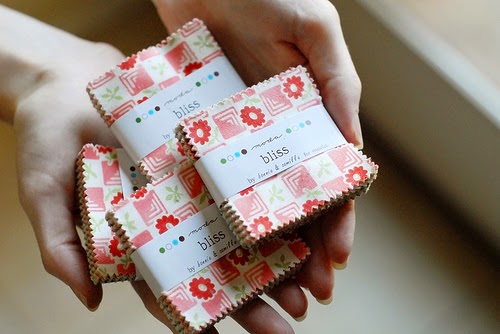So I've been talking about HEXIES in a lot of other posts. Finally, I'll let you onto what I've been doing with them!
FIRST- What is a hexie? It's a mini-hexagon. I made 1" hexies for my project but you can make them in a bunch of different sizes.
There are a few hexie-bucket-list-projects I'd like to accomplish.
- The quilt to the left has 5" hexies. I'm thinking it'd be lovely in our master bedroom.
- The mini-hexi quilt to the right is made up entirely of 1" hexies all sew together by hand. This might be a project I finish when I'm 70! It'll take that long to get all the hexies made!
- The pin cushion is something I'm currently working on for a swap I just joined. I think it'll be pretty fast and I hope to make a few of these. If you're into sewing, let me know and I'll send you a hexie pin cushion :)
My friend Sarah has a great tutorial on how to make them. Here's another too. They are sewn by hand. Once you get the hang of it, making them goes pretty fast. I love the fact that they are done by hand because I can do them on the couch when we are watching TV or in the basement when I'm watching Moses play.
For the 1" hexies you'll want to start with scraps of fabric that are approximately 2 1/2" x 2 1/2". That's why I love the mini-charm packs. They are the exact right size. You can most definitely use your scrapes too. Because I just started sewing I didn't have any scraps when I started so I bought mini charm packs for about $4 each. Etsy sells then as do some more modern quilt shops.

You'll next need a paper template to fold your fabric around. I initially just googled it and ended up with hexies that were 7/8" and not 1". Not too big of a deal for some projects but for my table runner the layout was a killer because they were not exactly 1". So go to Sew Quickly and use this template as it's exactly 1"- tried and true.
Here is a finished example of 1" hexie.
If you want to see the professional photo for my inspiration click HERE. I didn't want to put their photo directly next to mine because theirs is undoubtable better and more professional but I think mine turned out just great!
So here's my WIP (Work in Progress). The quilting process was surprisingly easy. It was laying out the hexies that took me FOREVER! Remember I said mine were only 7/8" and not a full 1"... it would've been easier with 1"
My finish table runner! I'm so happy with it.
It took almost 70 hexies. It's about 36" long and 12" wide. Most of the fabric was from charm packs- Cotton and Steel fabric line.
Just so you don't think hexie making is new.... below is a quilt my great-grandma made and is now on my guest bed. It's called Grandmother's Flower Garden and the pattern has been around for ages. This should be added to my bucket list too.
Sewing Level: Beginner- except the laying the pieces out - you basically need to be a rocket scientist or use 1" hexies!
Cost: $12
Time Commitment: 10 hours

















